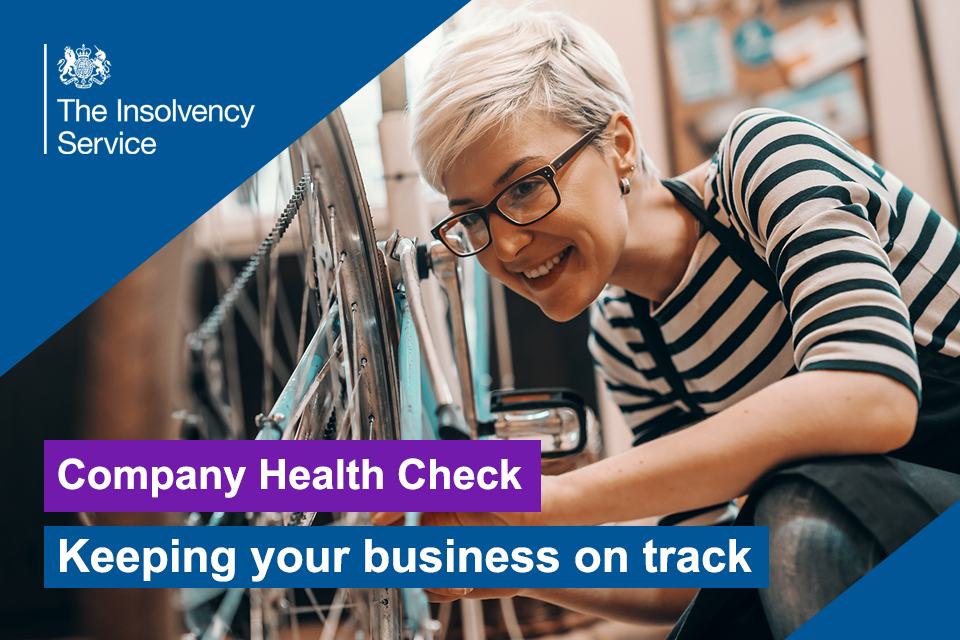Fact sheet: Bounce Back loans
Published 31 March 2022
Measures were introduced during 2020 to support businesses affected by COVID-19 such as loans, grants and tax allowances. The Bounce Back loan scheme helped small and medium-sized businesses to borrow between £2,000 and £50,000, at a low interest rate, guaranteed by the Government.
The Bounce Back loans were made on the condition that they were not to be used for personal purposes, but could be used, for example, to purchase a company asset such as a vehicle, if it would provide an economic benefit to the business.
For more information on understanding your duties as a director, read our Company health check - keeping your business on track guidance

Small business owner repairing a bicycle in a workshop with the title 'Company health check - Keeping your business on track'
1. Bounce Back loans must be repaid
The money lent to your company under the Bounce Back loan scheme must be paid back, over 6 or 10 years, with payments starting 12 months after your company receives the loan.
If the money your company borrowed is not repaid, your company may be investigated by the Insolvency Service, even if it has been dissolved.
For more information about repaying a Bounce Back loan.
2. If we find misconduct
If we find there was misconduct in the use of the loan, action may be taken against you and your company.
Types of misconduct can include:
- providing false information on loan application
- the loan being used for personal benefit
- dissolving your company to avoid repaying the loan
3. What misconduct means to you and your company
As a result of the misconduct:
- your company could be wound up by the Court
- you could be disqualified as a director
- a Court Order may be made for you to pay compensation to your creditors
We may also look at whether other coronavirus (COVID-19) related assistance such as the Job Retention scheme (also known as furlough) and the Eat Out to Help Out scheme have been used correctly.
For more information on understanding your duties as a director, read our Company health check - keeping your business on track guidance
4. Bounce Back loan: case study 1
Two separate companies submitted false documents to at least 41 local authorities and the Government’s Bounce Back Loan scheme to secure £230,000 worth of funding put in place to support businesses during the pandemic, including Bounce Back Loans totalling £100,000, despite having never traded. Following an investigation by the Insolvency Service, the companies were wound up by the Court.
5. Bounce Back loan: case study 2
An application for a Bounce Back Loan of £30,000 was made by the director of a company which was in Administration and no longer trading, so would be unable to repay the loan. Although the money was used to pay one company creditor, the company’s other creditors were ignored and so not treated fairly. The director signed a disqualification undertaking which prevents him from acting as a director for 9 years from 25 October 2021.
6. Bounce Back loan: case study 3
A man obtained a Bounce Back Loan of £50,000 in May 2020 to which he was not entitled, for a business which had already stopped trading and the man having taken up alternative employment.
The money was also not used for the purpose it was intended, instead using it to repay third parties rather than to meet ongoing business costs.
He then declared himself bankrupt in October 2020, including the loan in his bankruptcy debts. As a result of his improper application for the Bounce Back Loan and the risk he posed to other creditors, he entered a bankruptcy undertaking which extended his bankruptcy restrictions for 10 years, meaning he is limited to what credit he can access, as well as not being able to act as a company director without the permission of the court.
7. Bounce Back loan: case study 4
A director obtained Bounce Back Loans of £150,000 across three companies which had never traded, and so were not entitled to the loans. The money was used for cash withdrawals by the director, and payments made to a company owned by a “close friend” and other third parties. He was disqualified from acting as a company director for 13 years as a result. His “close friend” was also banned as a director for similar reasons.
